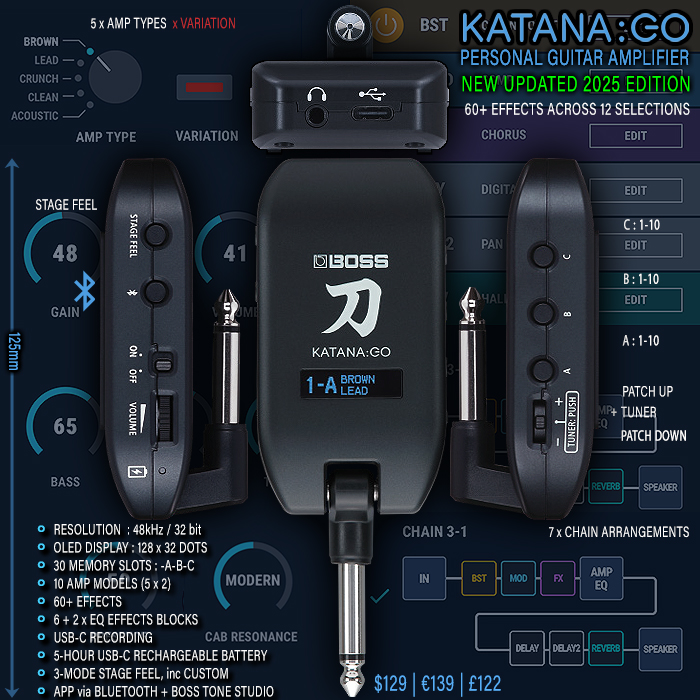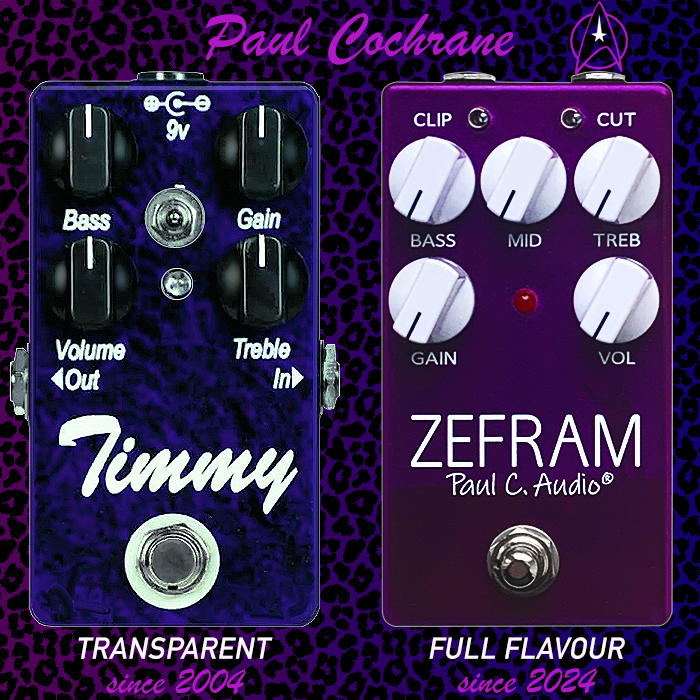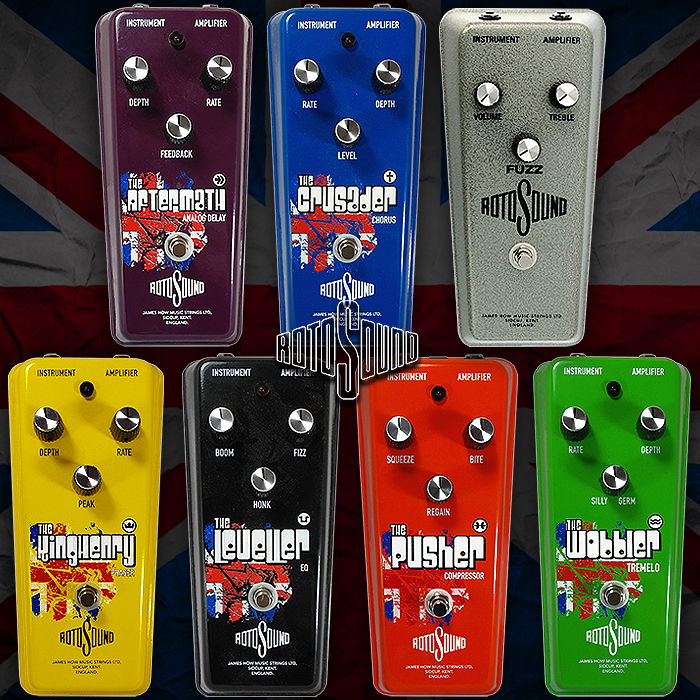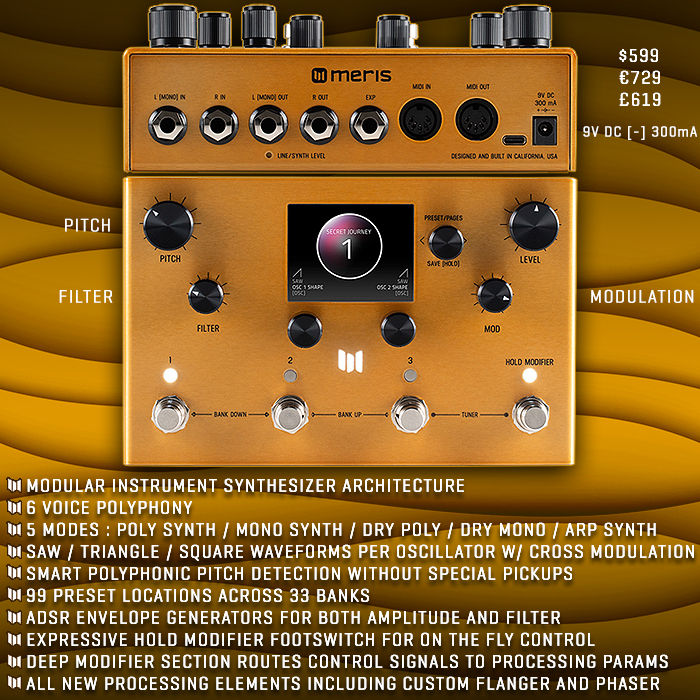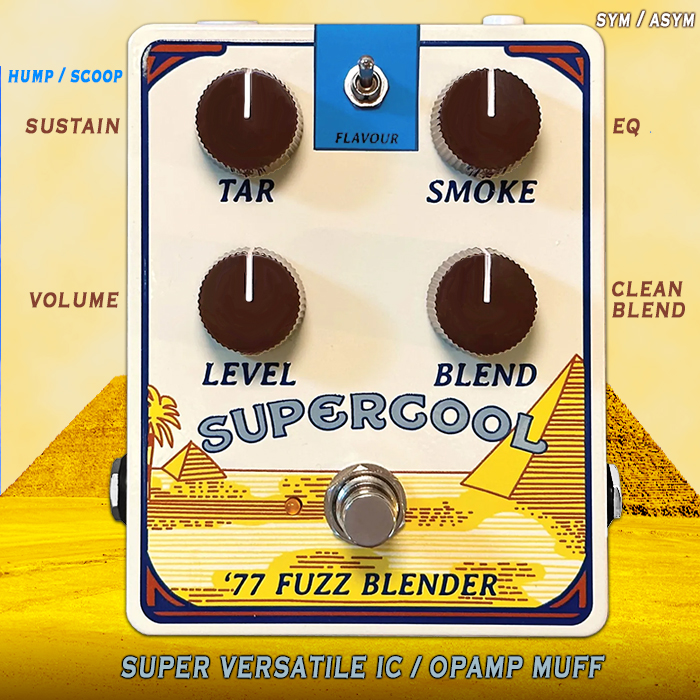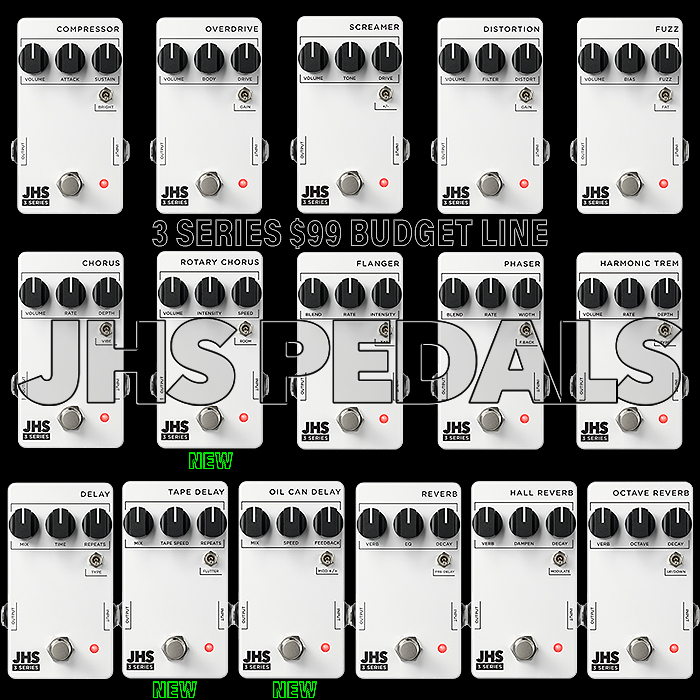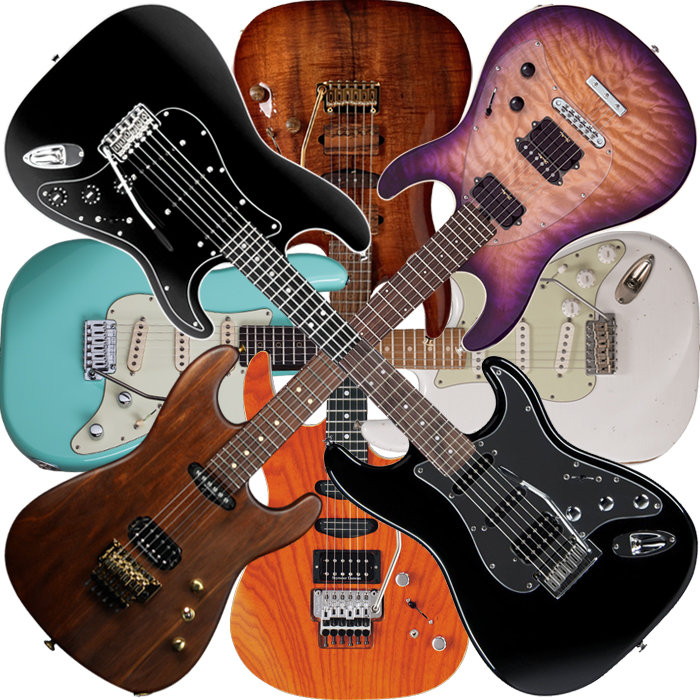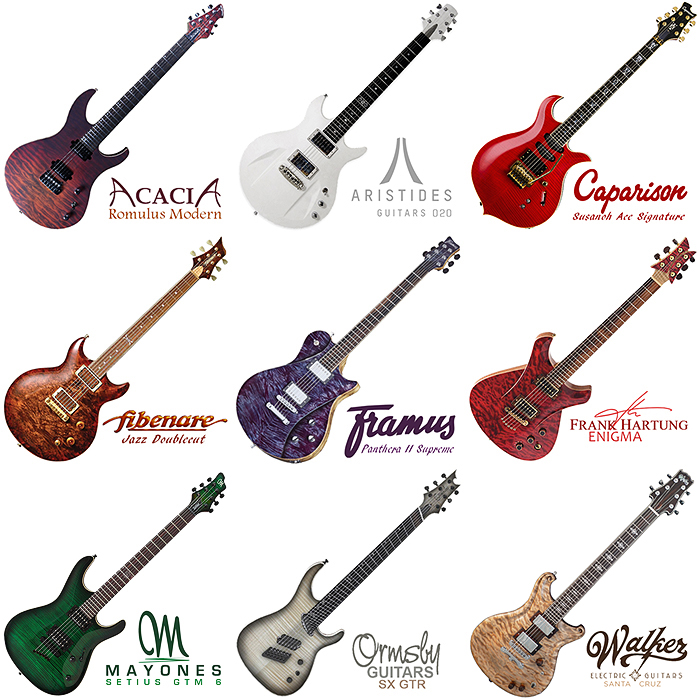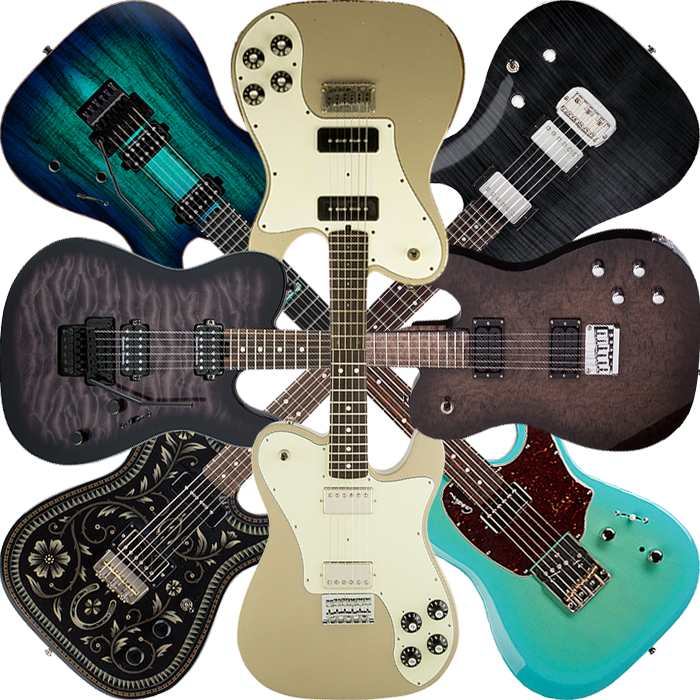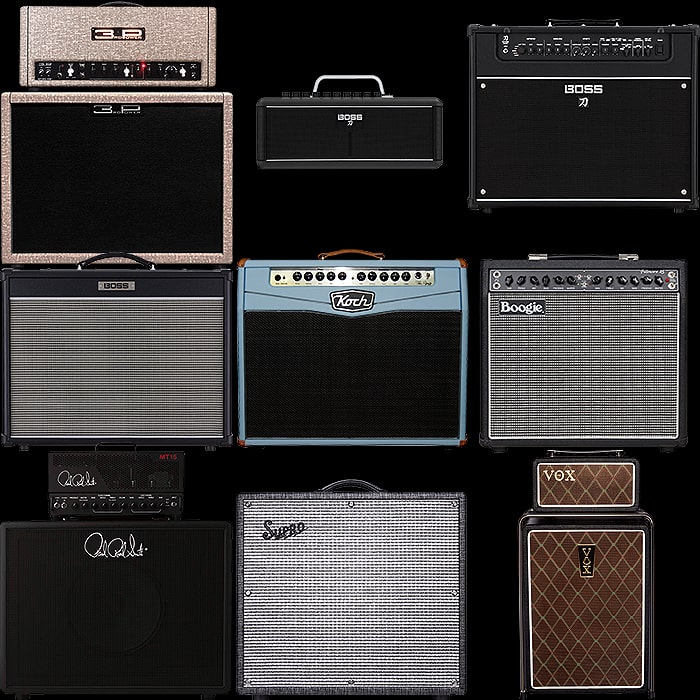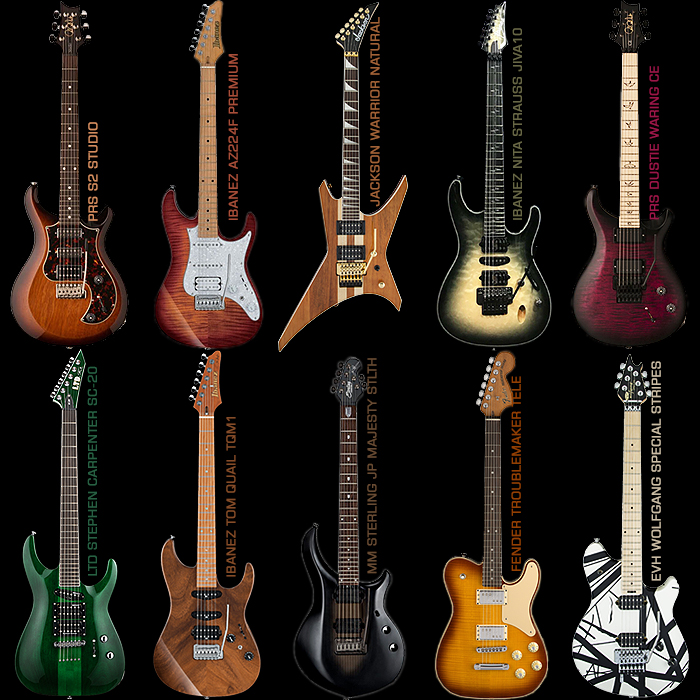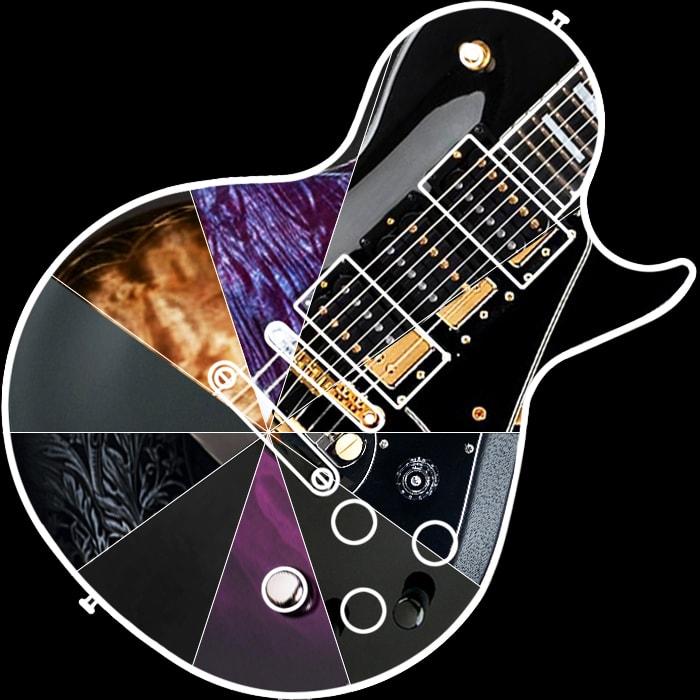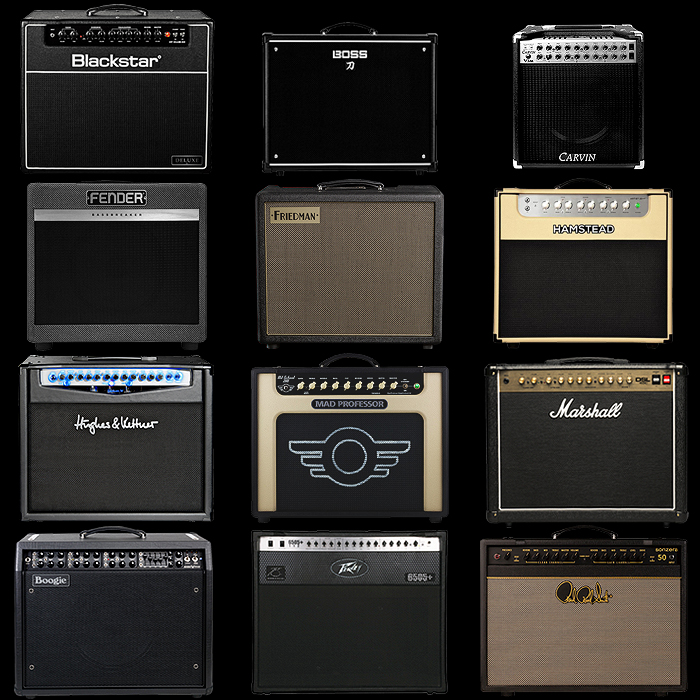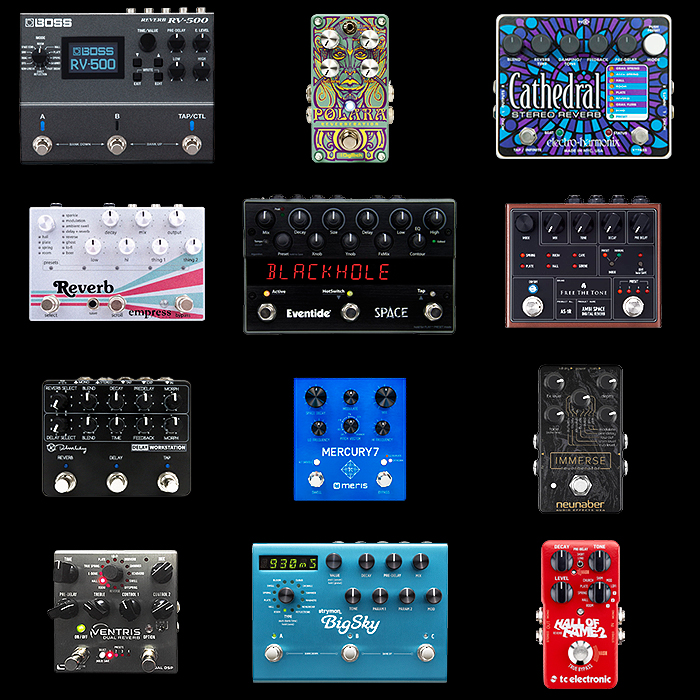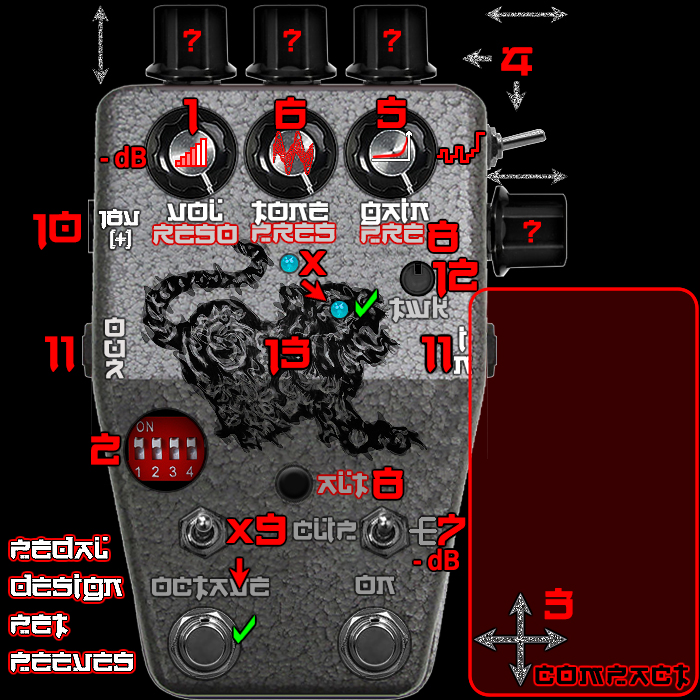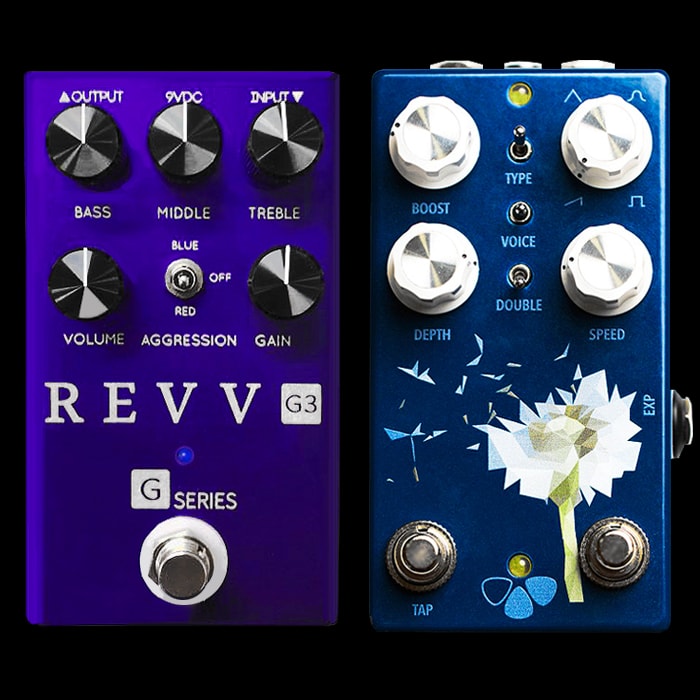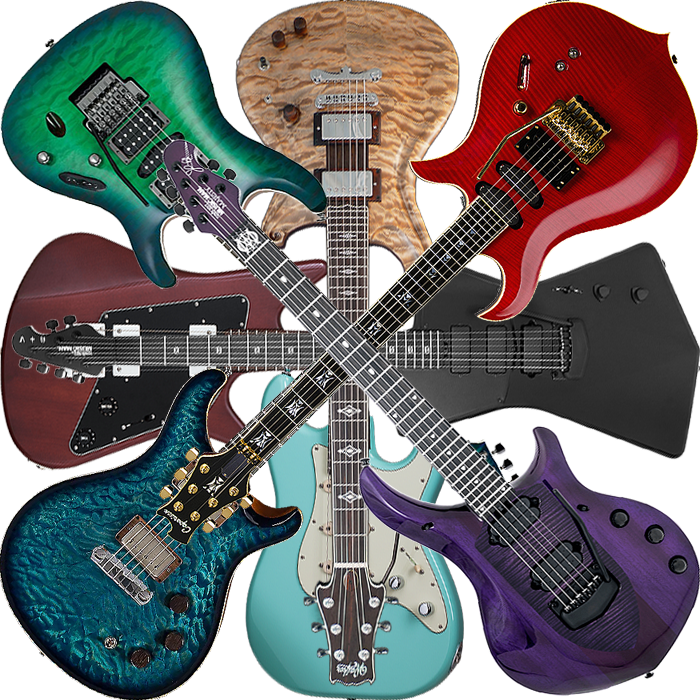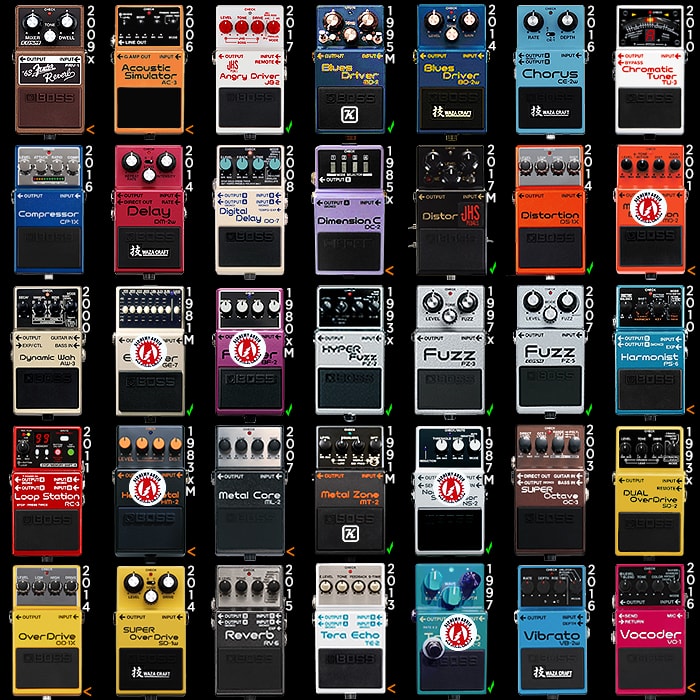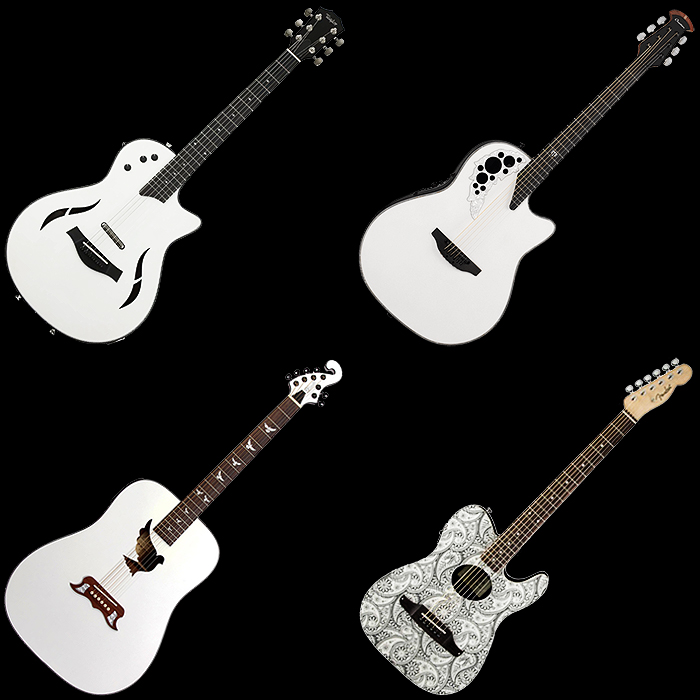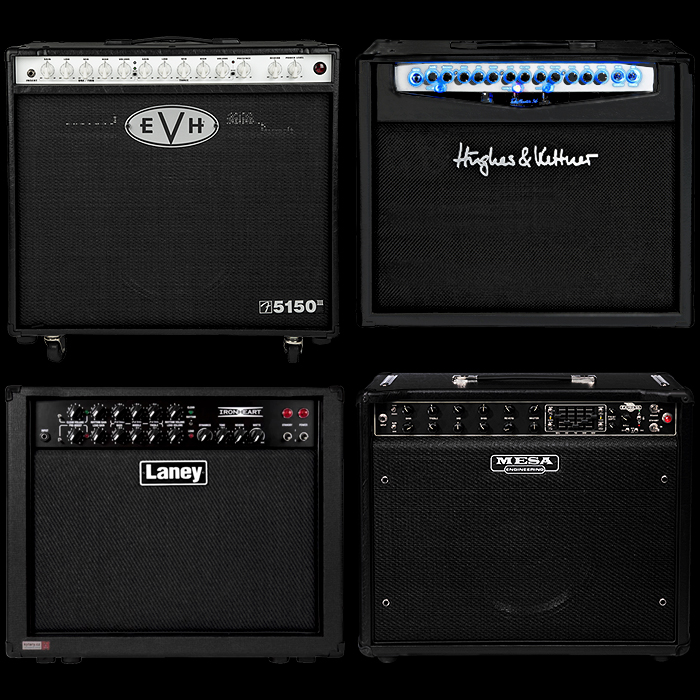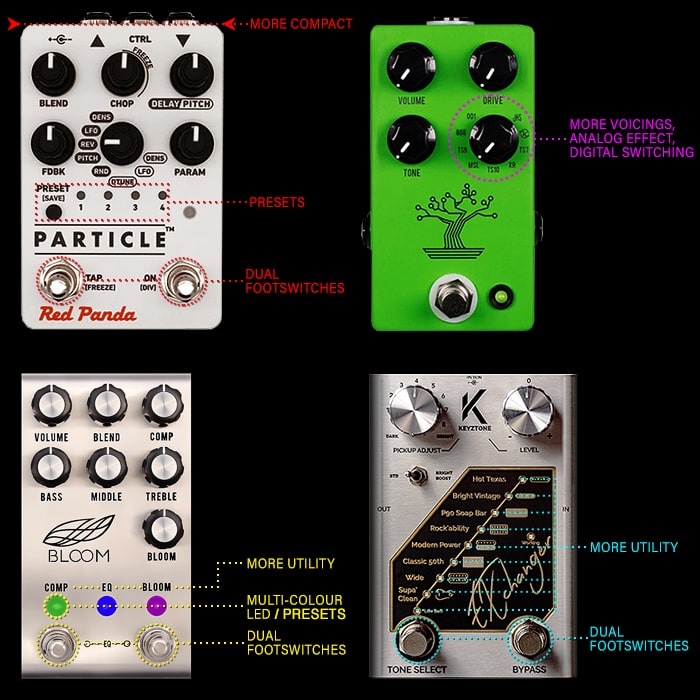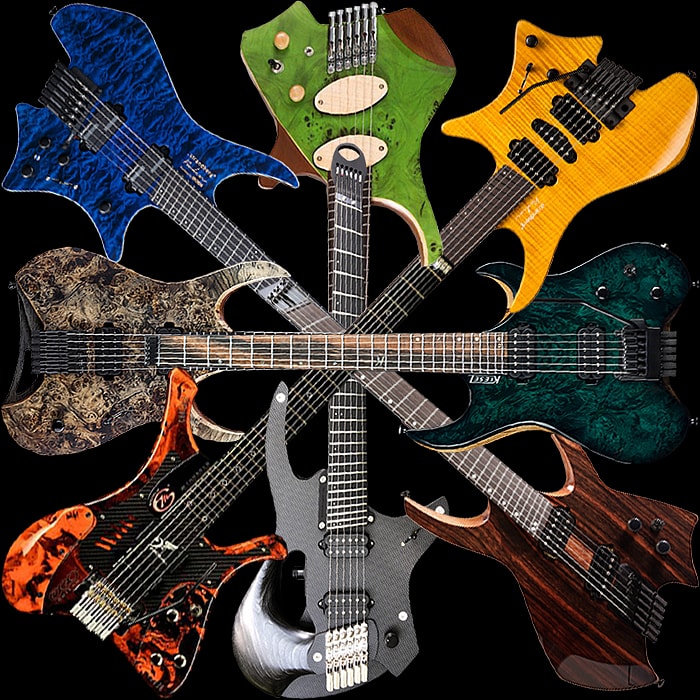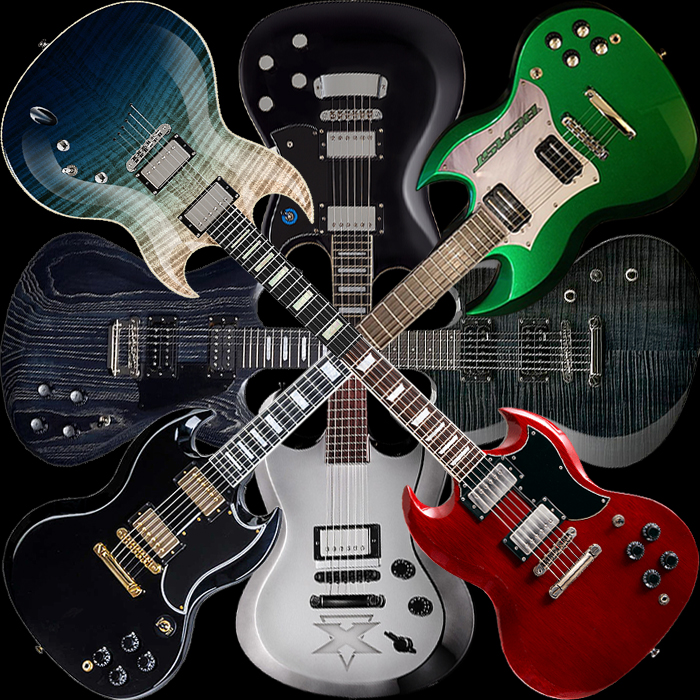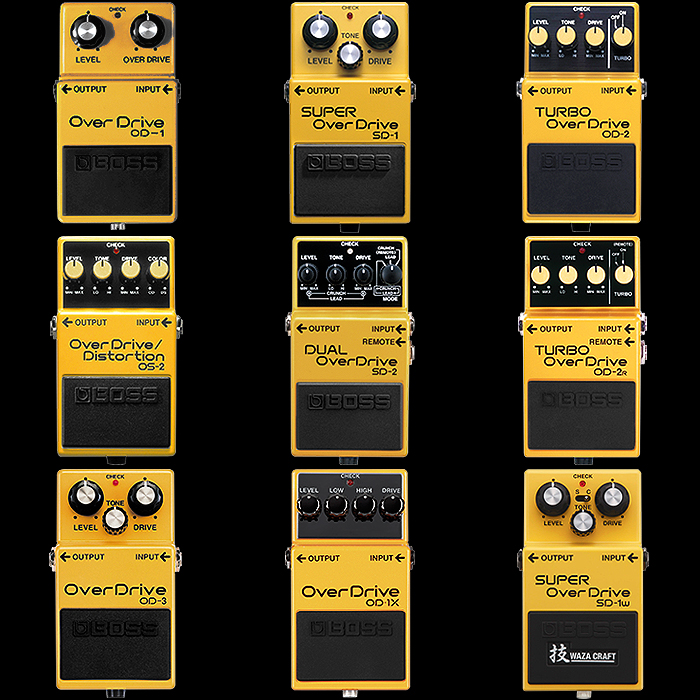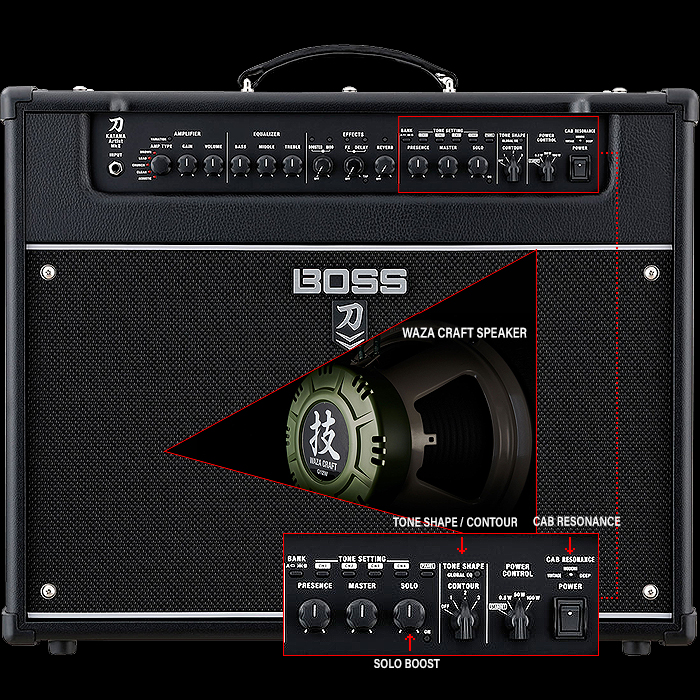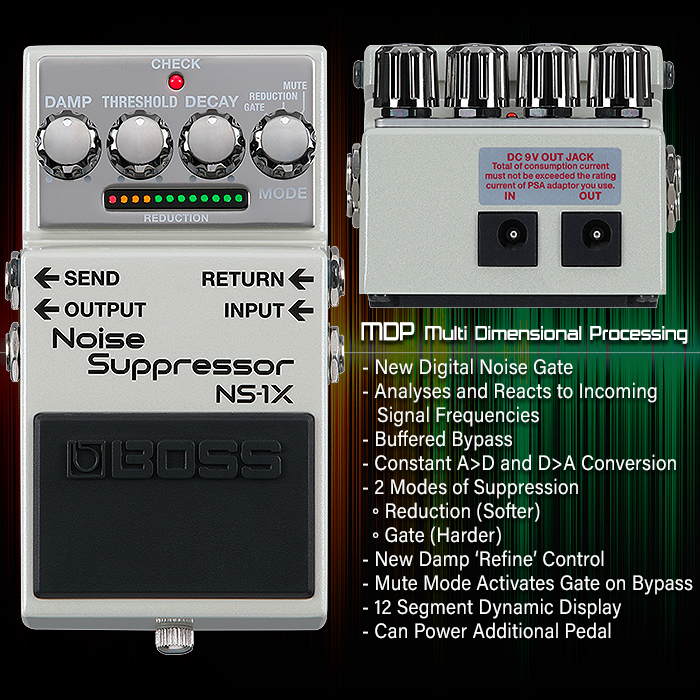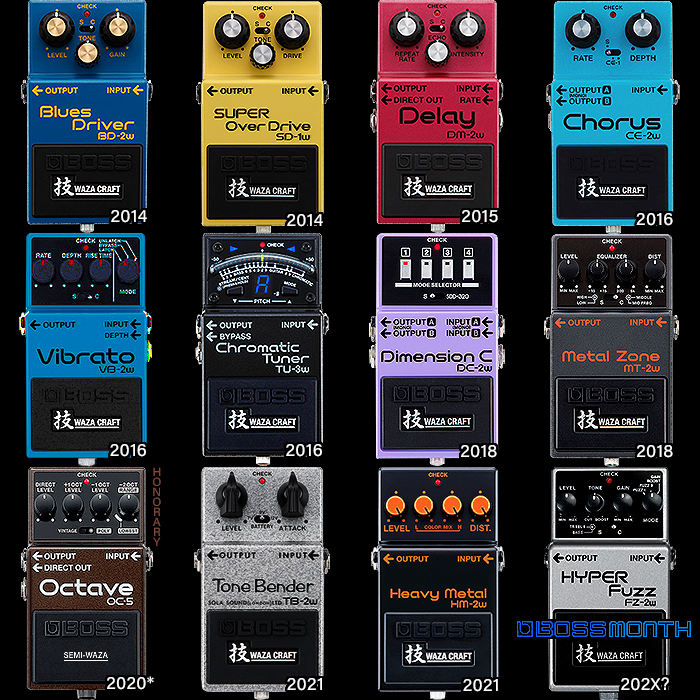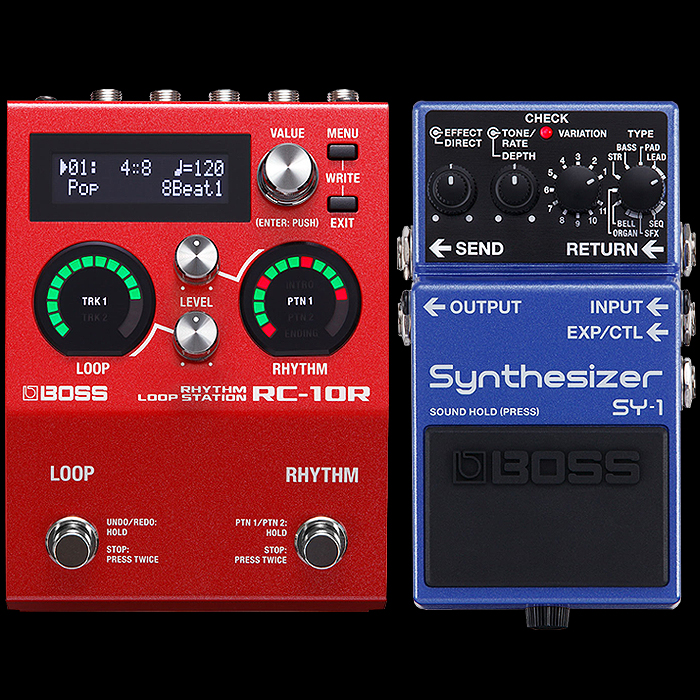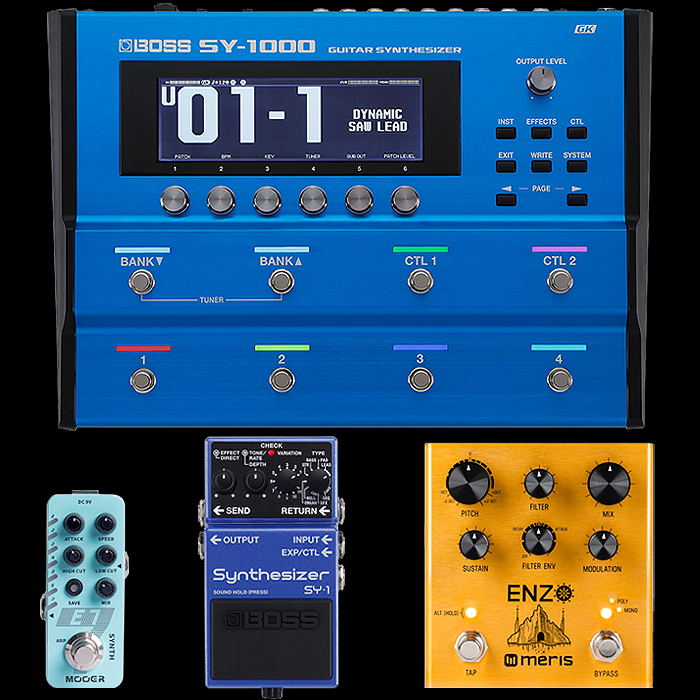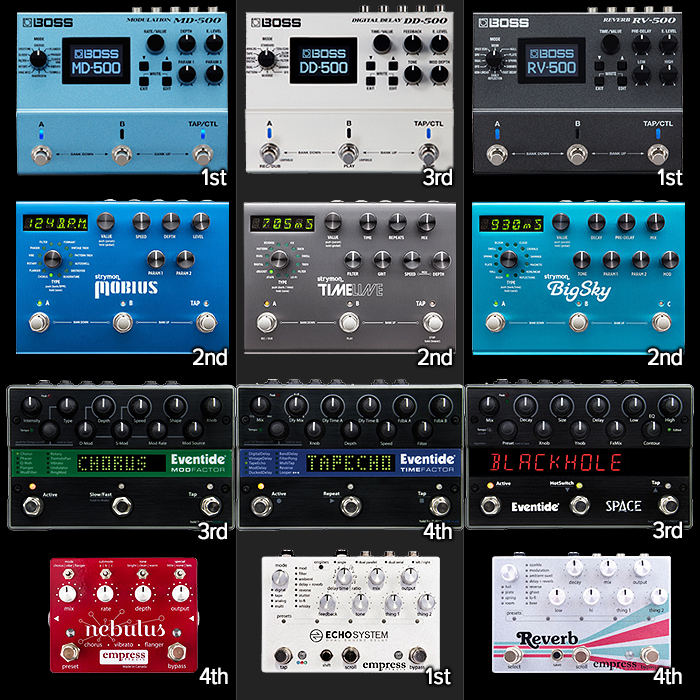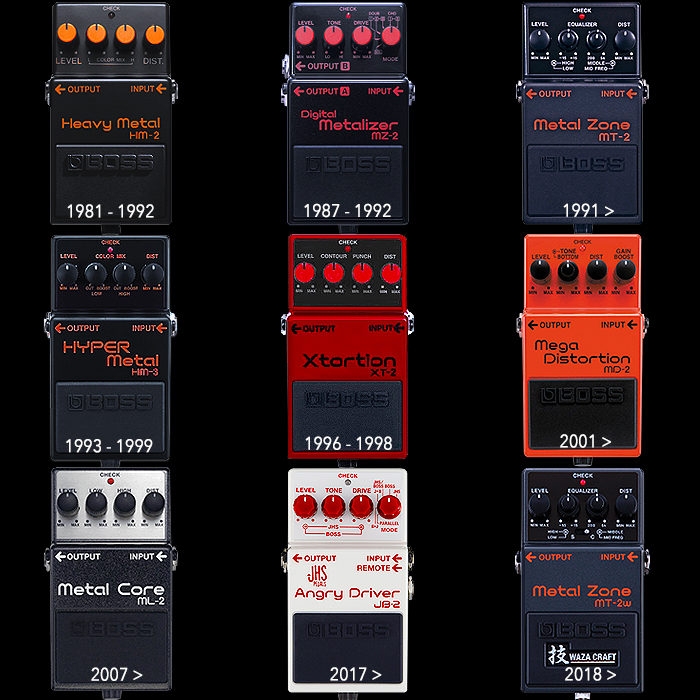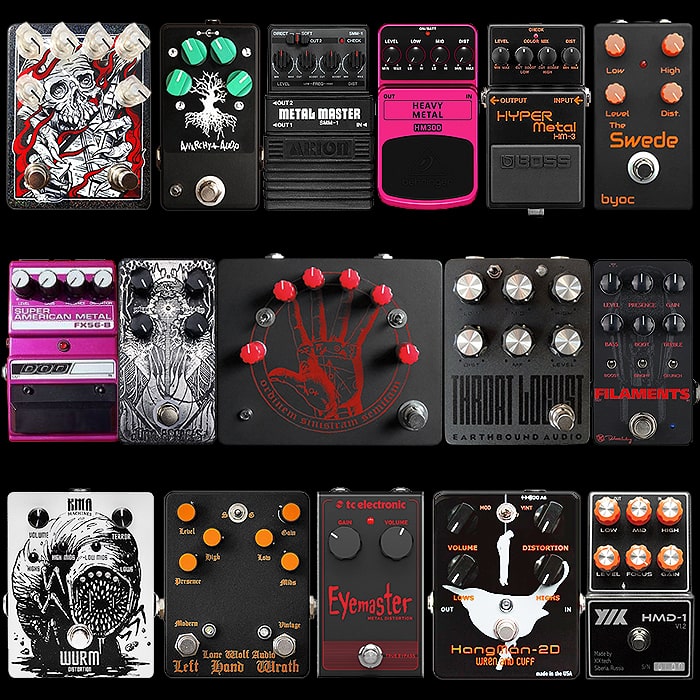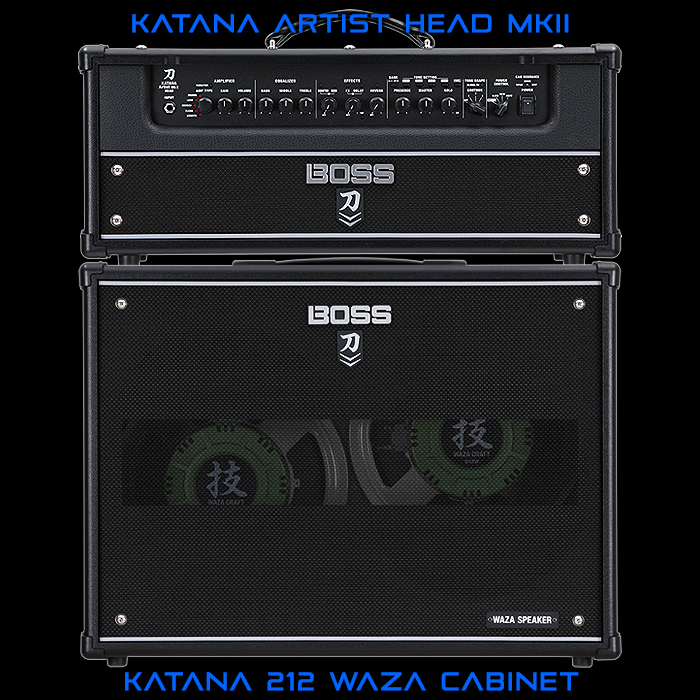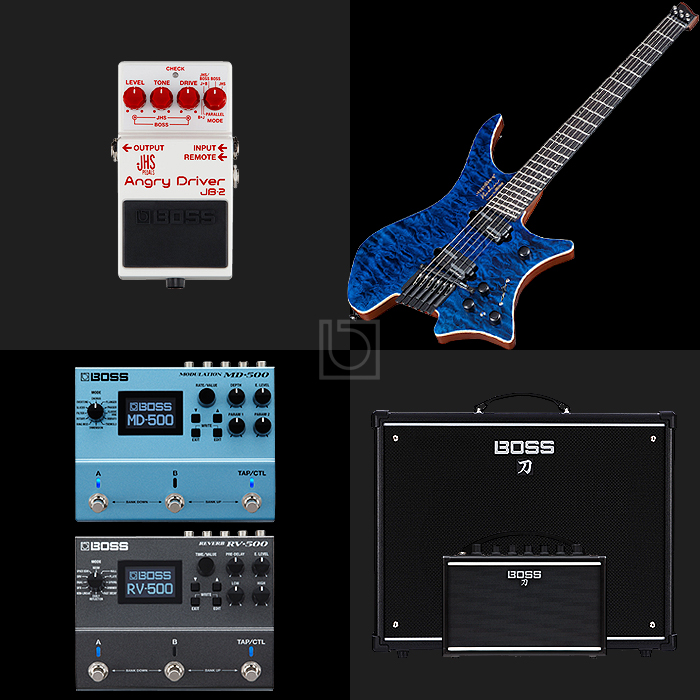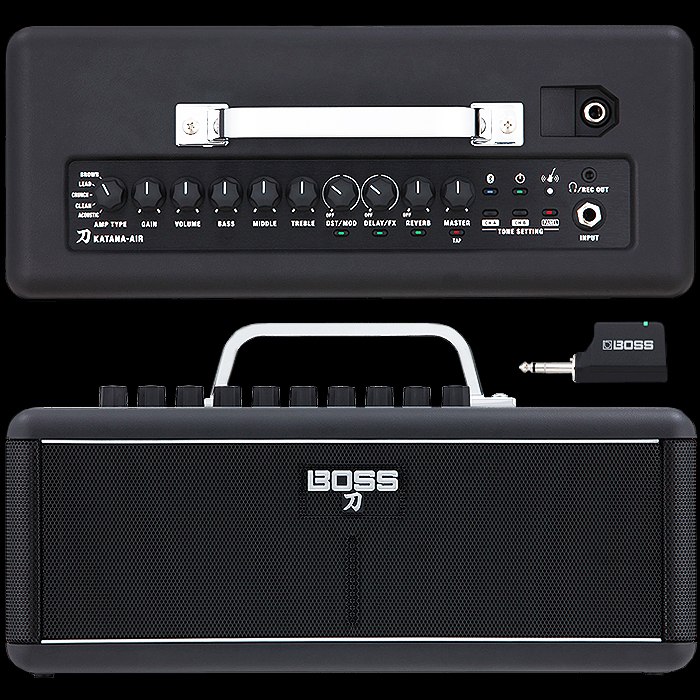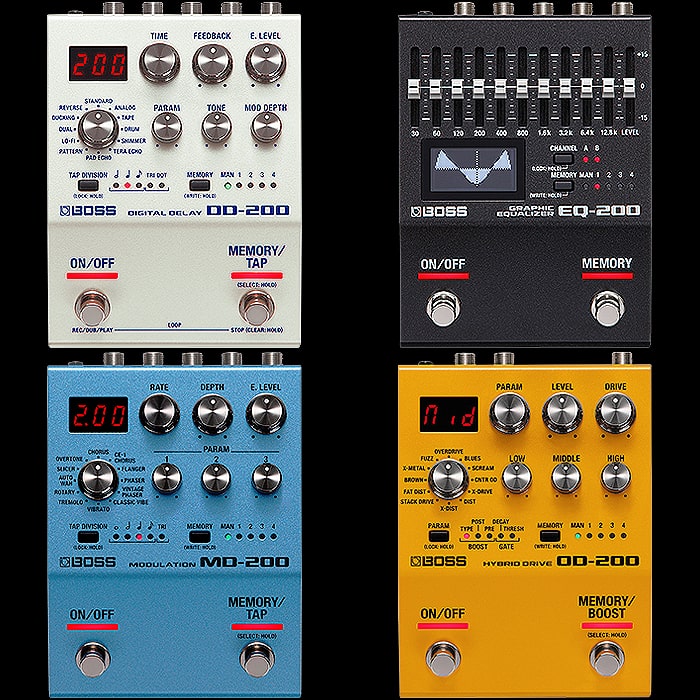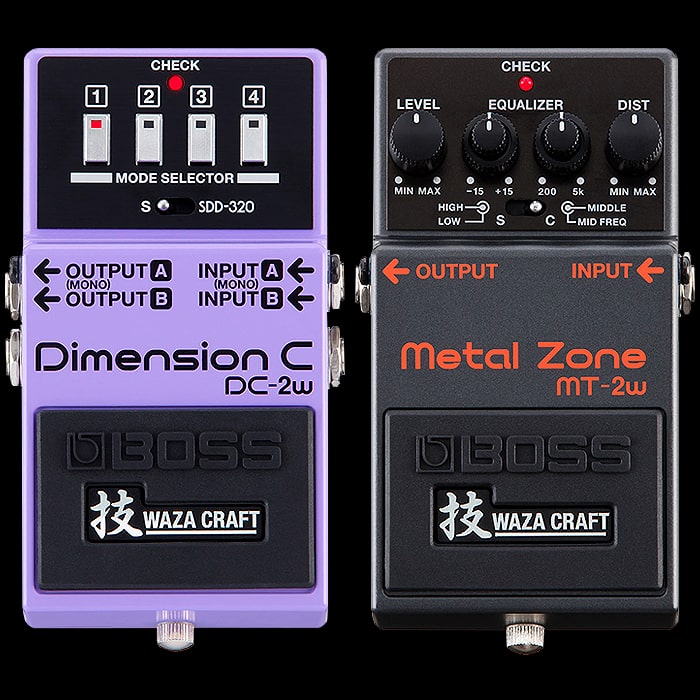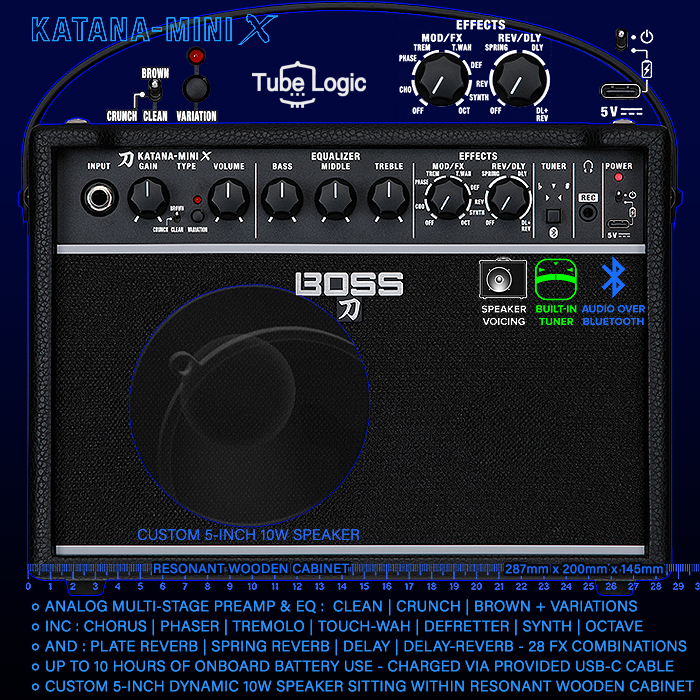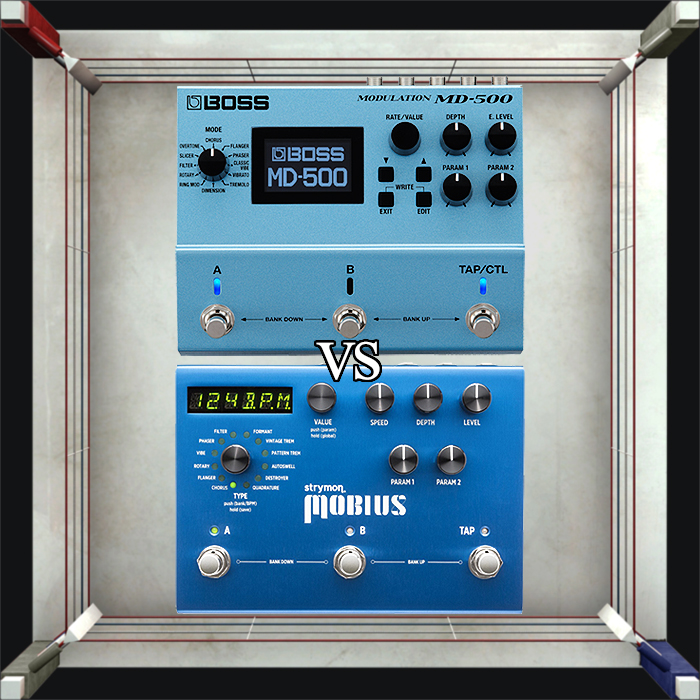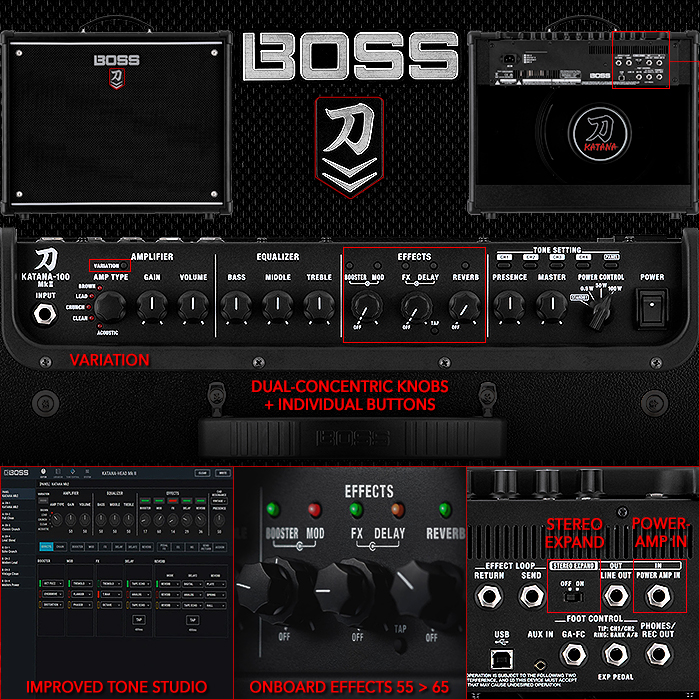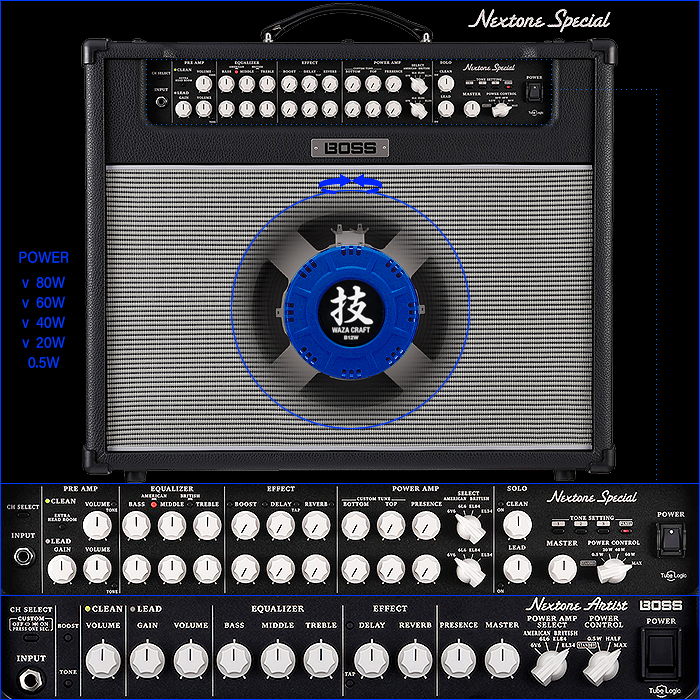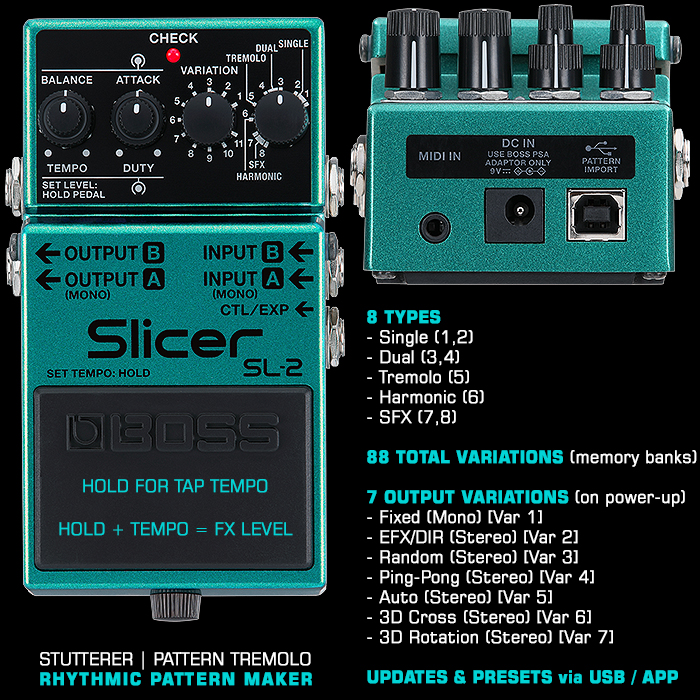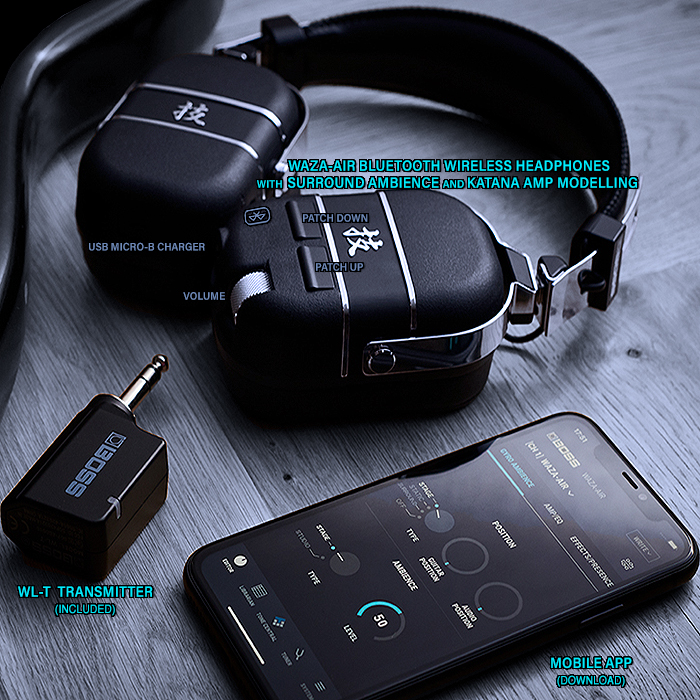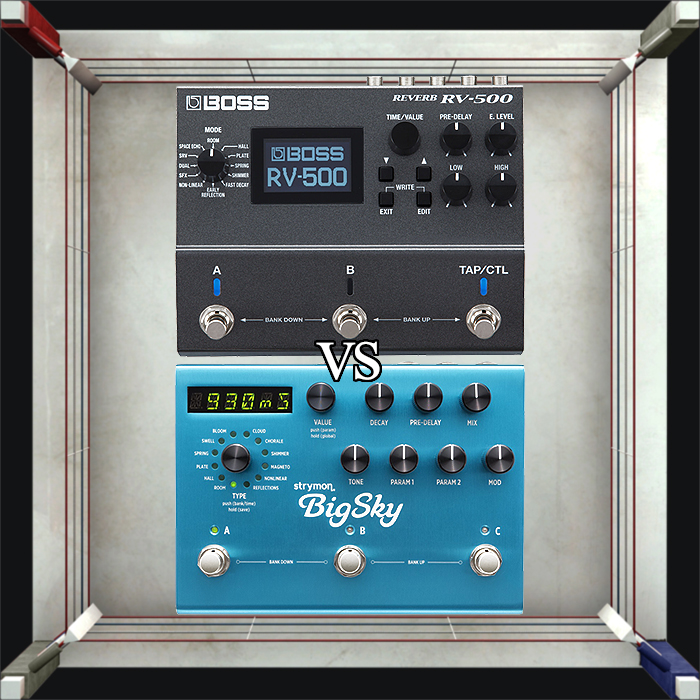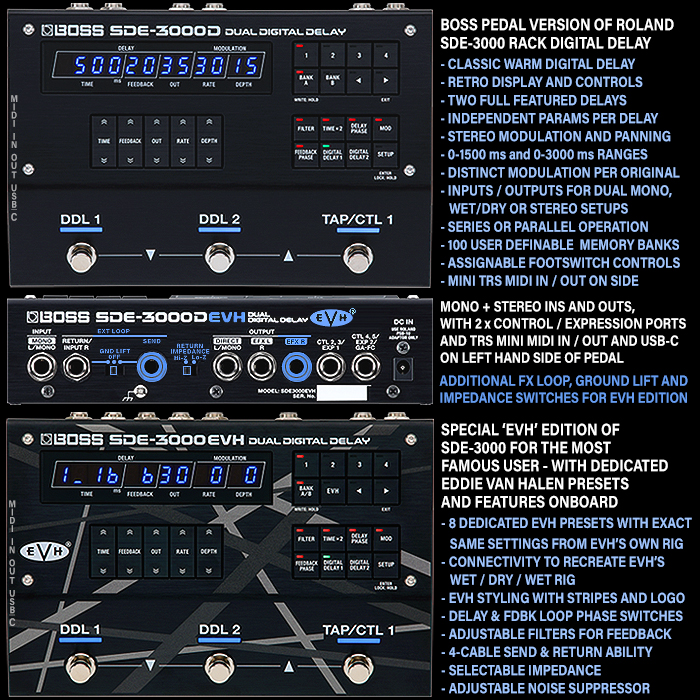The Perfect Guitar Amp Design / Next Level Boss Katana
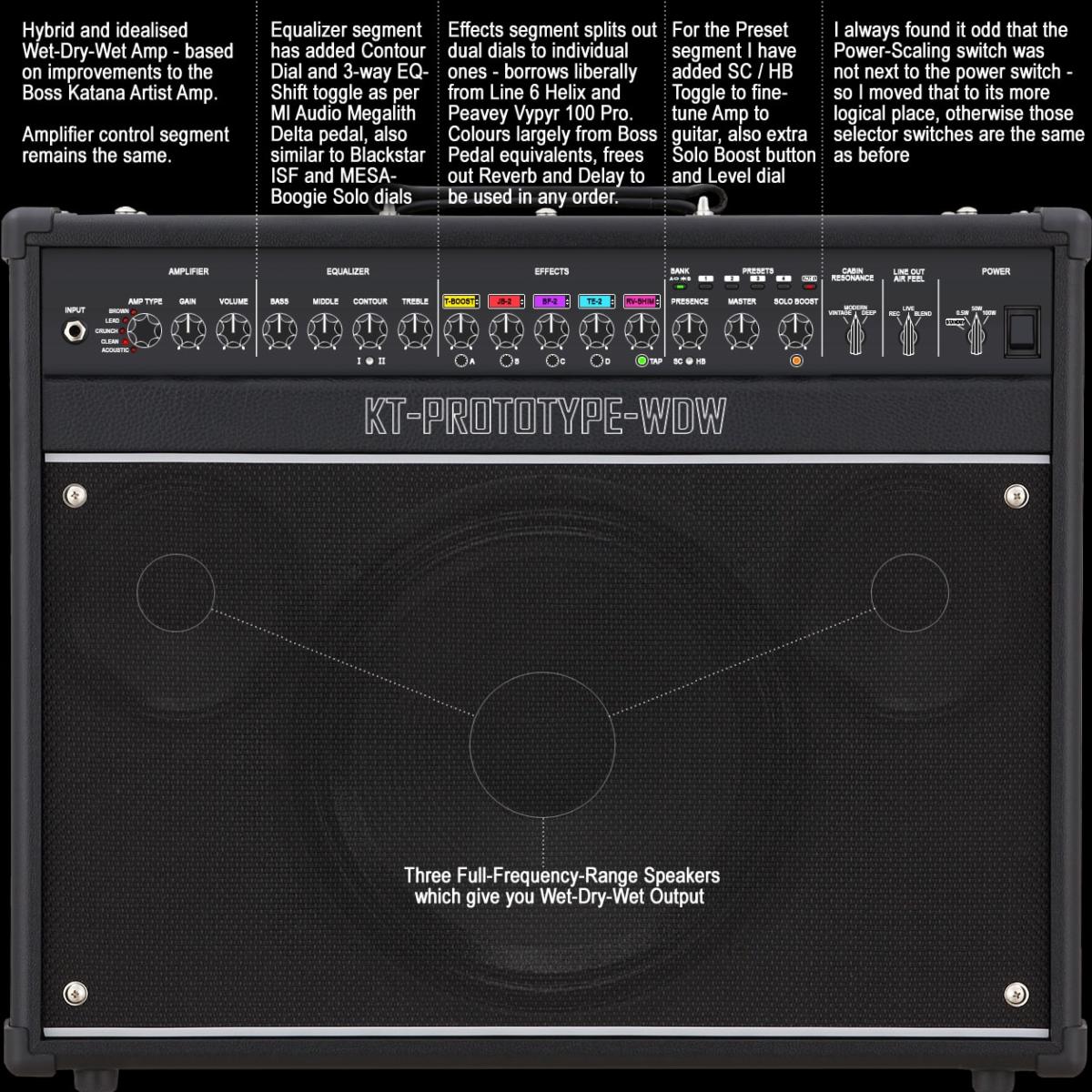
I will preface this article with two statements - firstly, I currently run a stereo rig with a 39-pedal-chain, going into a Boss Katana KT100 on the left channel, and an all-tube Carvin V3MC on the right. The Katana is obviously a digital modelling amp based on an EL34 tube amp profile, while the Carvin V3MC runs on proper EL84 tubes - which gives you a lovely warm, dynamic and sparkly tone. The two amp profiles combine really well together to give you a beautifully harmonically rich and wide-frequency stereo output.
I am very obviously a huge fan of the Boss Katanas - which get better with each new generation. I fully intend to get a Katana Artist into the mix as its dynamics are a notch above my current KT100. I’m still focused on the pedal quest currently, so that amp will have to wait a while longer. What is happening though is that the Katanas are getting closer and closer to the dynamics of full tube amps - I totally believe that within a year or two people will be extremely hard pressed to tell them apart in either sound or feel.
When I was first considering this amp, I was thinking of putting more solid-state components into the amp, possibly even having a genuine tube pre-amp section with a solid-state or digital power-stage. There are several ’maintenance’ issues with tube amps - in that the tubes have limited lifespans, and most need to be switched out and biased by professional amp technicians. Having to drag your amp to a workshop every couple of years or so is a major pain in the ass. I thought someone could introduce a sleeker tube-tray unit with auto-biasing circuitry to allow anyone to replace their tubes, but then I thought I might as well just dispense with tubes entirely.
I next thought that Boss could do with using more analogue circuitry - i.e. building the core preamp stage with traditional transistor-based circuits (like the excellent new RevivalDrive from Origin Effects does) - to create the necessary dynamics and grit. Yet Boss’s digital modelling is at such a level now that I cannot but see that it will get to a level eventually where it will equal all the tonal qualities of the tube-amp inspirations - with their randomised fluctuations, ghost notes etc.
I considered for a long time what kind of amp I would want - I am still 99% pedal-platform based - so it’s a must that the amp sounds amazing with pedals - with a lovely sparkly clean channel. I also want it to be able to perform wholly stand-alone though, and without a need for any external pedals - bar an amp controller - which the Katanas are still sorely in need of. Boss currently forces you to adapt / adopt the Roland GA-FC foot controller, which really is not that suitable. I don’t know why they haven’t manufactured a dedicated Katana footswitch yet - it certainly makes sense seeing how many Katana Amps they have sold.
(Open above image in separate tab to see full size)
The Boss Katana Artist Amp which the Ideal Amp is based on / evolved from
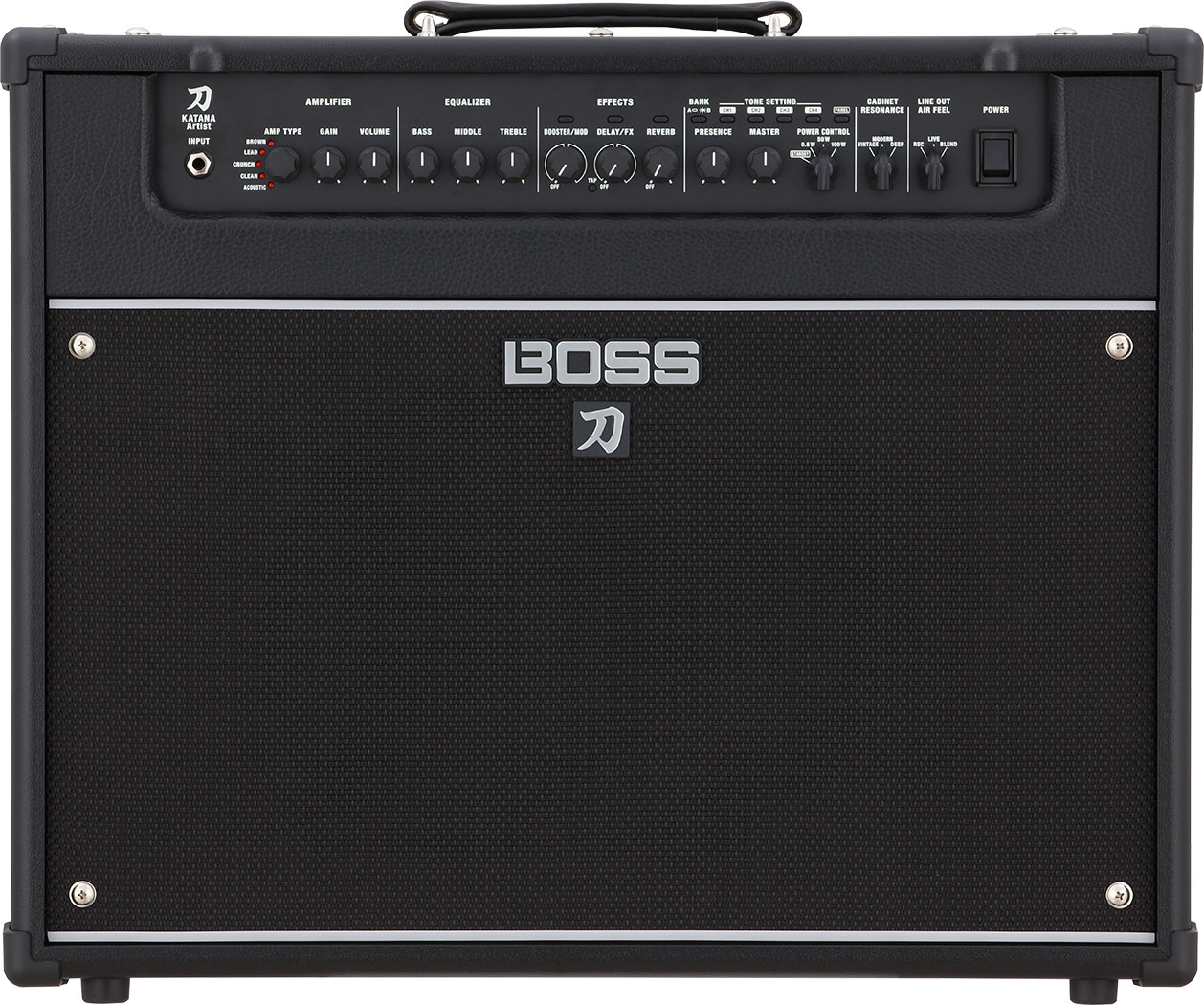
The Ideal Amp (Top) Details:
All Onboard
One of the biggest mistakes I made some years ago now was to buy a Line 6 Amplifi Amp - which relied way too much on a connected blue-tooth app, and had hardly any controls on the amp itself. For my needs - everything must be controllable and adjustable via the amp's visible onboard controls.
Boss made some smart engineering concessions for the format - with its dual-combination FX dials where each half of the sweep activates 2 different effects. Yet it meant that you could only run 3 effects simultaneously via the amp controls - and all those effects were in fixed positions along the chain.
So I took the recently launched Boss Katana Artist 100W 1 x 12 Combo Amp model with Waza Speaker as my base - and made several innovation recommendaitons to create my perfect amp. It goes without saying that the amp would need to sound entirely tube-like, and be improved in a variety of areas to fulfil my requirements. I have not delved into the inner mechanics of solid-state analogue vs digital modelling - I'll leave that to the Boss Engineers.
One of they key innovations though is giving you a Wet-Dry-Wet rig from a single amp, via 3 full-frequency-range speakers which split the effects layers from the core guitar drive tone. It would be relatively easy to do that within the electronics of the amp, but more complicated where you have a significant pedal-chain going into the amp as I do, it probably needs more inputs on the reverse.
Key Essentials
I am entirely a home player, with neighbours, which means that any amp I have has to have power scaling - to allow me to play at low volumes, but with degrees of saturation. The control panel should ideally be front facing and totally lucidly clear - so that if something isn't sounding right - you can spot what's up with a single glance. As with pedals I have stated a likeness for compact form-factor - so small size and as light a weight as is possible are important considerations. For my taste though the main speaker has to be a classic 12" diameter, and to fit in the 'Wet' speakers you would need sufficient width to the cabinet. Oh - and yes - I prefer fully self-contained combo amps!
Wet-Dry-Wet Output
I run a full stereo rig, but the holy grail for many now is a wet-dry-wet setup where your core guitar tone / drive etc. goes through an amp placed in the centre position, while the effects are split out in stereo into separate 'wet' left and right-hand amps. The idea here is that you get a more clarity / note separation and a more even, and crisper tone, while the danger of my current rig is that mixing in the guitar signal with the effects - even when split out in stereo, can give you a slightly 'muddy' output. I of course throw several tricks into the mix to give me better separation and clarity, and I really like the use of Stereo effects -panning delays, reverbs, tremolos, phasers and of course rotary speakers, for which the stereo soundstage is essential.
Many swear by a Dry/Wet setup - which yes does give you the clarity and crispness of signal, but looses you the additional dynamics of stereo effects. So the Wet-Dry-Wet setup is the ultimate for achieving the absolute best sound. Guitar speakers also tend to have slightly different frequency range accentuations than full-frequency speakers - and so are not as dynamic if say you wanted to run a beat-box or other time and space effects through the rig.
My Yamaha TV Soundbar / Sound Projector does something really clever with 16 speakers - to bounce soundwaves in different directions and off different surfaces to simulate surround-sound, so possibly more than 3 speakers may be required to deliver the perfect Wed-Dry-Wet soundstage, but this is in any case a big step in that direction - and certainly saves on space within fitting everything into a single amp versus 3!
Tone-Tweaking and Equalisaiton
I thought for a long time about introducing a 5-band EQ like some of the MESA/Boogies have, or even a 7-band version. But I thought that may be overcomplicating things slightly, so I concentrated on the mid-frequency sculpting in the identical manner to my MI Audio Megalith Delta heavy gain pedal - which has a separate Contour Dial, as well as a 3-way EQ-Shift toggle to change the Mid-range frequency profile. It goes without saying that the tone controls would need to be fully active vs shelf-based. And the Megalith Delta approach is really quite similar to Blackstar's ISF Dial, and MESA/Boogie's Solo Dial - both of which affect a mid-frequency EQ shift in their own way. I feel that these controls would give you everything you need here in the most powerful yet simplest way.
Effects (FX) Selection
To my mind, one of the cleverest effects selection / display interfaces anywhere is found on the new Line 6 Helix HX device. I've combined this in part with the colour-coded display dynamic of the Peavey Vypyr 100 Pro amp - to come up with the above interface and schema which significantly updates the workings of the Katana one, and roughly works along the following lines:
- You have 5 FX Slots which consist of 5 button display/selectors and 5 dials (vs 3 active slots of current Katanas)
- There are then 4 mini dials below - A|B|C|D - which allow you to fine-tune the selected FX's parameters
- There is also the Tap button of the original, now with integral flashing time-sync LED
- Each of the 5 buttons can be pre-loaded with 20 or so FX, you simply click on button to cycle between FX
- The FX are largely taken from Boss's pedal library, and button displays will change to reflect actual or accent colour equivalent of source Boss pedal / family
- The FX buttons have a 7 character limit display - which is mostly enough to cover all source pedal designation - whether BF-2 or DD-500
- If you press the buttons for 2 seconds or more, you will get 4 fine-tune settings appearing in slots 1-4 (similar to the Helix HX) - and which can then be manipulated by the A|B|C|D mini dials
- The larger dials will always be FX level - meaning you can manipulate 5 parameters per effect / slot, as well as run 5 FX simultaneously
Presets Segment
I have largely retained the 'Tone Settings' segment as is, I prefer to call it 'Presets' - and I have tidied it up slightly. I have added a 3-way toggle under the Presence dial - this is a sort of bright cap toggle - to help to align the Amp to your Guitar - whether SC (Single Coil) or HB (Humbucker) - with a neutral setting in the middle. Each shifts the 'Presence' profile slightly to give you easier and more convenient tunability. I have also added a 'Solo Boost' button with corresponding level dial - this would give you a slight but significant boosts in gain and volume for standout / solo passages - it would of course need a dedicated footswitch on the new dedicated Katana Foot Controller pedal qv.
Cab Resonance, Line Out Feel and Power
I've never thought it made sense to have the Power Scaling selector so far from the Power switch, so I have moved it right next to it, otherwise I have retained those new Katana Artist switches as is.
Need for Proper Dedicated Pedal
I already have a Roland GA-FC Foot Controller for my KT100 - which comes with a dedicated overlay sticker for a Katana, which to me is shoddy and an oversight. The extended functionality range of the Katana is poorly served by this old Roland footswitch unit. I would have thought that Boss could have done a proper job on this considering how many tens of thousands of Katana Amps they have sold to date.
It goes without saying that my added-functionality visualisation above would need a much better footswitch to enable more FX and include a dedicated Boost switch.
Final Thoughts
As with my 'Perfect Pedal' visualisation - I must state that I am not an electronic engineer or technician, and I have done zero due diligence on the technical challenges of the above amp. I have however once more not really 'invented' anything new here really. There may be a few projections here - but pretty much all the functionality I describe is already available on other devices - albeit not necessarily amp production models - yet engineering-wise no component needs to be prototyped - the FX switches are likely one of the biggest challenges here.
This is all actually largely just an evolution of the existing Katana Amps - with my solutions to improving their versatility and usability. I genuinely hope that someone from Boss sees this and takes some of these ideas onboard. Another thing I had considered adding to the 'Amplifier' segment was a 'Bias' switch, which allowed you to switch between different tube types - I thought that might be over-doing it a touch, and I was starting to run out of real-estate for placing controls.
Where I am right here and now in my thought process though, this would pretty much be my ideal amp, in the meantime I will probably settle for a Katana Artist; I am also set to acquire the Wireless Katana Air at some stage. As I have noted several times previously, this is my Year of Fuzz, and I am very much in the pedal mindset right now - so the new amps will have to wait until the end of the year.
April is going to be a very exciting month pedal-wise - I get my Custom Tones Ethos TWE-1 and Origin Effects RevivalDrive pedals, and the eagerly awaited JHS Bonsai and Crazy Tube Circuits Constellation are also finally released. I think I will call a halt on my Fuzz pedal acquisition drive once I have acquired the CTC Constellation, OBNE Haunt and Skreddy P19 - I will truly then have a fuzz for every occasion in every key flavour.
I also fancy a new guitar or two (most likely a PRS S2 Studio), but that is definitely something for next year...







